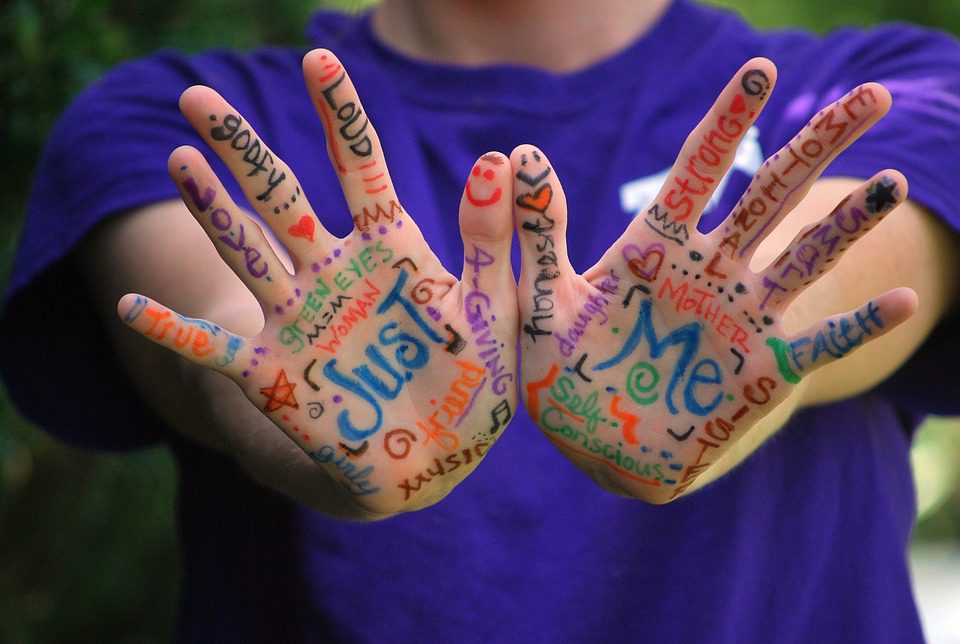Google Search has become a far more dynamic and visually interesting place than it was back when there were only ten simple blue links. One of the ways Google has improved is through its advancement of machine perception – that is, enhancing a machine’s understanding of images and other media. It’s an important area of research for the search giant that deeply impacts the search experience today.
Google recognizes that people use not only typed text but also voice and image searches to learn more about the world around them, find specific products and services, and solve their immediate needs. In this post, you’ll learn about visual search, marketers’ tools for visual search optimization, and the current best practices for image SEO.
Visual search tools for users
Search is an increasingly multimedia experience. Understanding how users discover and explore visual content is a crucial part of optimization strategy. Here are just a few ways people use different search engines and their various new tools to answer their queries.
Google Lens
Google Lens is a visual search tool that uses artificial intelligence (AI) to identify objects in the real world. Consumers can search for products, places, and other information based on smartphone or tablet camera images. For example, if someone sees a photo of a pair of shoes they like, they can use a picture of those shoes on Google Lens to find similar shoes online and easily purchase them.
But Google Lens can do more than help you find your next favorite pair of shoes. It can translate text in an image in real-time, help searchers conduct research by finding tutorials and explanations, and help searchers identify plants and animals in the world around them. It can also help users discover where to eat by showing them restaurants based on a picture of food.

Example Google Lens search
Recommended reading: Google Helpful Content Update: Tips for Enterprise Brand Success
Google Image Search
Google’s Image Search is a powerful tool for visual search, allowing users to find images related to their query quickly. With the rise of mobile devices and the increasing popularity of visual content, Google has made it easier than ever for users to find what they’re looking for with just a few clicks.
Bing Visual Search
It’s important to consider Bing, despite not being the top search engine market leader, still receives its fair amount of traffic. As of December 2022, Bing accounted for nearly nine percent of the global desktop search market. Bing also has its own visual search tool. Bing Visual Search is another platform that allows users to upload an image or use one from the web to find related content, images, videos, and products. The tool also provides detailed information about the image, such as its size, resolution, and type.
Alternative image search engines
There are more search engines than Google and Binge getting on board with visual search. Searchers can use alternative image search engines to find images not indexed by traditional search engines. This is especially useful for finding images related to niche topics or specific keywords.
For example, TinEye is a popular reverse image search engine that searchers can use to find images through a URL or upload a photo. In addition, Yahoo, Pinterest, Yandex, and Openverse are other popular image search engines available for searchers.
How Google has recently become more visual
With Google’s visual search becoming gradually more prominent, businesses need to be aware of how their images are being used online and make sure they are optimized for Google’s visual search. Here are a few of last year’s initiatives and developments to make sure you’re up to date:
In April 2022, Google introduced multisearch. Sometimes, searchers think of concepts but lack the specific words they need to find what they are searching for online. Multisearch allows searchers to use images and text together to find answers.
With the rise of TikTok as a popular form of visual search, Google announced search options to reclaim some of its users in September of 2022. Many of these changes came to Google Lens with shortcuts to search, such as “shop for products,” “search inside photo,” and “solve homework,” which appear under the search bar.
In another example of its emphasis on visual search, Google changed its image structured data format in October 2022 to allow users to add copyright, image creator, photographer, or credit information straight to its structured data properties. This not only provides more information for images but allows users to credit the creator properly.

Google search results over time
Visual search technology marketers need to know
As technology evolves, marketers are realizing new and innovative ways to create more impactful customer and searcher experiences – the kinds that inspire people to engage, share, and convert. Here are some visual search tools enterprise marketers will want to check out.
Vision API Product Search
Google Vision API Product Search is an online product search service powered by machine learning. It enables developers to create specialized search tools and applications to recognize objects in images and provide detailed information on them. With this service, users can identify products and look up their availability, price, sellers, specifications, reviews, and more.
The API makes it easy for developers to incorporate visual search capabilities into their applications with just a few lines of code. For example, Google Vision API Product Search provides insight into customer purchase decisions by helping businesses find the products customers are most likely to buy.
Cloud Vision API
Google’s Cloud Vision API is a set of powerful machine learning-based APIs used to process and analyze images. These APIs enable developers to build image recognition applications that identify objects swiftly, detect facial features and emotions, extract text from images, classify content, and more. With the help of Google’s Cloud Vision API, developers can explore endless possibilities for developing sophisticated image recognition applications with ease.
Cloud Vision AI Testing Tool
Google’s Cloud Vision AI Testing Tool is a tool that allows developers to quickly and easily test Artificial Intelligence (AI) models in the cloud. The tool enables users to upload images and videos and apply various pre-trained AI models for tasks such as image classification, object detection, facial recognition, landmark or logo recognition, explicit content detection, and more. In addition, this tool allows developers to experiment with various techniques to solve specific problems.
Finally, Google’s Image Schema guidelines and Schema Markup Validator are tools designed to improve the visual search engine optimization of websites. With these tools, web admins can structure their website content so that Google’s algorithms can better parse and understand the visual content. In addition, Google Images supports structured data for Product, Video, Recipe, and Image metadata types.
Best practices for image SEO
Images that help your brand stand out in competitive search results and help searchers understand the local experience on offer at each of your locations have never been more important. Here are some best practices for optimizing images.
Start with High-Quality Images
High-quality images are essential for any successful visual search strategy. They should clearly and accurately represent the product, service, or content you’re promoting. When creating high-quality images for visual search, it’s essential to consider the following:
- Image size and format: Make sure your images are the right size for the device they’re being viewed on, whether mobile, tablet, or desktop. JPEG, PNG, BMP, and now WebP are standard image formats used in visual search.
- Image resolution: High-resolution unique images will look better and are more likely to appear in search engine results pages (SERPs). Avoid stock images where possible.
- URL structure: Keep the URL structure simple and easily understandable.
- Image placement: Make sure to place your images where it will enhance the user experience when reading through your content.
Recommended reading: A Brand Guide to Building Memorable Local Experiences
Optimize Your Images
When optimizing your images for visual search, descriptive titles, alt text, file names, and captions are essential. Descriptive titles and alt text can help ensure that your images are accurately indexed by search engines and appear in SERPs. It’s also essential to use optimized file names and captions to make it easier for users to find your images.
To better optimize your images, marketers can:
- Compress images with tools like Imagemin
- Utilize videos instead of GIFs
- Incorporate only responsive images

Make images findable
To make your images findable by Google, marketers should select responsive images, use an image site map, and use semantic markup for images.
A responsive image is an image that can change to fit the device a searcher views the image on, providing a better end-user experience on mobile devices. In addition, responsive images also help reduce load times by only displaying appropriately sized images for a device’s resolution, making them an important tool in helping improve page performance.
Next, an image sitemap is an XML file that contains information about all the images of a website. The image sitemap helps search engines better understand the images. It also allows web admins to improve their website content structure, as it links to essential pages with related images, making navigation simpler for users.
Finally, semantic markup is a way of formatting code with additional language-based tags, which provide additional meaning and context to the underlying content. This helps search engines understand the relationship between elements on a web page, which results in improved SEO performance. In addition, by making webpages easier to understand, semantic markup can make content more accessible and easier for everyone.
Conclusion
Visual search has the potential to revolutionize how people find information online, which is why it’s crucial for businesses to be aware of this technology, how it will evolve, and how it can affect their SEO strategy.
Visual search can help businesses reach more potential customers by making their product images and service listings more visible in SERPs. By following best practices for image SEO, companies can ensure that their images are correctly optimized for visual search and improve their website’s visibility.
By using high-quality, optimized images, businesses can further improve the discoverability of their websites and images in competitive local search results. To learn more about how to optimize your local photos.
More helpful resources:



